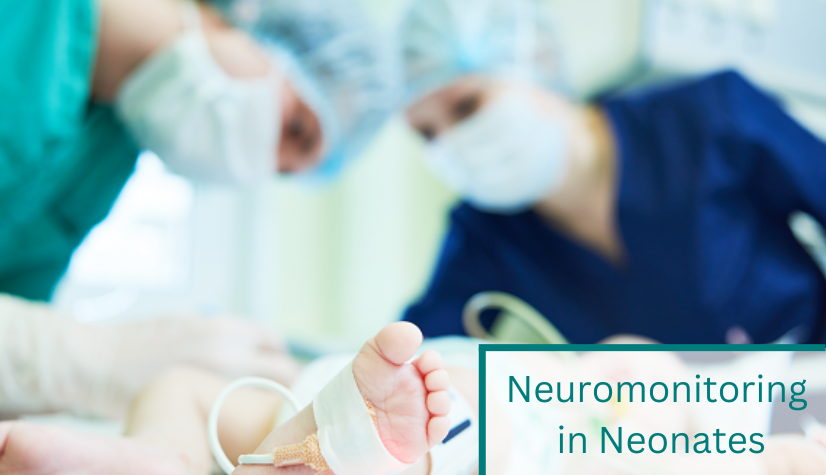
28 Feb. 2023 Neuromonitoring in Neonates
Neuromonitoring in Neonates during Cardiac Surgery
Neuromonitoring of cerebral blood flow (CBF) involves the measurement and monitoring of the blood flow in the brain.
During surgical procedures, monitoring of CBF can be used to identify changes in blood flow that may indicate inadequate cerebral perfusion or ischemia. This information can help the surgical team make real-time adjustments to optimize cerebral perfusion and minimize the risk of cerebral damage.
Neuromonitoring in neonates is important for assessing the effects of interventions on neurological function. By monitoring brain activity and blood flow, healthcare providers can determine whether these interventions are effective in protecting and preserving neurological function in neonates. Various non-invasive and invasive techniques are used for neuromonitoring at neonates. These may include electroencephalography (EEG), near-infrared spectroscopy (NIRS), transcranial Doppler (TCD) ultrasonography, and brain magnetic resonance imaging (MRI), among others.
Overall, neuromonitoring at neonates is a critical tool for ensuring the best possible outcomes for these vulnerable patients.
8th ‘Utrecht Sessions’ on congenital heart disease with focus on hypoplastic left heart syndrome
UMC Utrecht/Wilhelmina Children’s Hospital, the Netherlands, has hosted 8th ‘Utrecht Sessions’ on congenital heart disease, which took place on February 2nd – 4th, 2023.
Focus was on the state-of-the-art management of patients with hypoplastic left heart syndrome (HLHS) and covered the entire spectrum from fetal diagnostics to stage I palliation.
An international faculty from Europe and North America – professionals being involved in HLHS care – guaranteed stimulation lectures and interactive discussions.
Neuromonitoring is a fundamental duty in the care of newborn patients
A lecture on ”neuromonitoring in newborns during cardiac surgical procedures” was given by Prof. Kenneth M. Brady.
During cardiac surgery, neonates are at high risk for cerebral damage. Ken Brady presented that the brain is not protected by cardiac flow and full flow does not protect the brain without pressure. At high cardiac flow but low pressure, the brain is inadequate to perfuse. Cerebral and renal vascular beds respond differently to low output and low pressure. Afterload reduction improves cardiac output and renal perfusion, but afterload reduction does not improve perfusion to the brain. The brain requires arterial blood pressure to autoregulate, regardless of the adequacy of cardiac output. Therefore, autoregulation monitoring during bypass is needed.
UMC Utrecht/Wilhemina Children’s Hospital – under Dr. Kim van Loon, anesthesiologist/pediatric-cardio-anesthesiologist – is conducting a study on cerebral blood flow in neonates during major cardia and non-cardiac surgery with the goal of developing an intraoperative monitoring strategy that will allow individualized management of cerebral blood flow and oxygenation in neonates.
In Wilhelmina Children’s method neuromonitoring is including TCD bilateral monitoring through the temporal L/R windows with 2 MHz monitoring probes and adhesive probe fixation pads.
